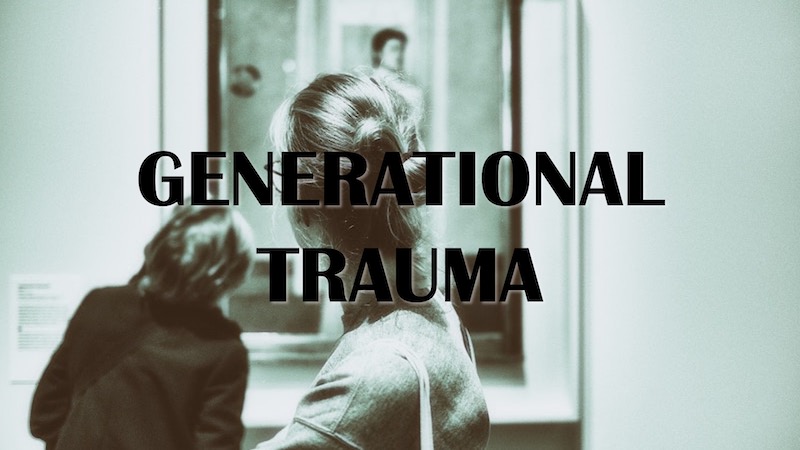Releasing trauma – how to calm the nervous system
- 4 November 2025
- Posted by: Michael H Hallett
- Category: Generational trauma , How-to & step-by-step ,

We live in a world where our nervous system is under constant assault. Doom scrolling, 24/7 hyperexcited news feeds, political and economic uncertainty and unsustainable busyness—let alone any personal or family issues—create a world of ongoing redline stress.
Time out, time in nature, meditation, mindfulness, conscious breathing and other techniques can provide temporary relief to our frazzled nervous systems. Yet for permanent relief we go deeper—into the uncharted reefs of our unconsciouswhere buried traumas, often inherited, are routinely triggered in today’s livewire world.
Trauma is not just psychological. It’s wired into your body, carried in the rhythms of the heart, in muscular tension, in the tremor of your nervous system. Recognising and releasing trauma accesses these underlying tensions, increasing emotional stability by reducing our susceptibility to triggers, reducing pressure on the nervous system.
The nervous system: trauma’s silent archive
When a traumatic event occurs—whether in your lifetime or inherited across generations — the nervous system registers the threat: fight or flight. If the system isn’t allowed to reset (successful fight or flight) it remains on high alert: freeze and fawn.
All traumas are instances of overwhelm, danger situations where fight or flight weren’t possible. Emotional overload became lodged in our minds, feelings, and bodies, and we turned to freeze (playing dead) and fawn (playing nice) as coping mechanisms. Ancient unresolved issues get triggered by current events, spiking our nervous system.
What this means is that your nervous system is a silent archive of unresolved trauma. In Trauma exists as a series of ripples I describe how trauma can be categorised in five broad layers, each of which impacts how the nervous system responds:
- Current life—traumatic events in your life
- Generational—trauma patterns inherited from recent generations
- Community—patterns acquired from geographical, cultural, religious and community affiliations, such as India’s caste system or America’s gun culture
- Racial—trauma patterns inherited from racial discrimination
- Ancestral—ancient patriarchal patterns common to all humanity
While underlying trauma exists, you live in the past and future simultaneously: the nervous system anticipates threats long after the threat is gone. Releasing trauma is key to calming the nervous system—not just as a victim story in your mind, but as unprocessed emotional pain and muscular tension.
Trauma and the nervous system exist in a symbiotic relationship, a two-way street. Just as trauma informs the activities of the nervous system, the nervous system can be used as an access path to connect and process unidentified trauma.
Calming the nervous system
Here is a five-step process for using the nervous system as a pathway to trauma:
- Ground and breathe: Begin by settling into your body. Place one hand on the heart, one hand on the belly. Breathe slowly. Inhaling: 4 seconds; hold: 5 seconds; exhale: 6 seconds. This pattern invites the parasympathetic nervous system to signal safety.
- Scan the body & invite release: Consciously adopt a state of non-judgment. Scan your body from the toes upward. Notice where the body holds tension. Wherever you meet resistance, pause and breathe with it for several breaths then say: “It is safe to release this.” Holding presence while the system trembles or shakes invites the nervous system out of the freeze state.
- Trigger deeper layers: Because trauma exists in layers, you may invite the nervous system to ‘trigger’ safely. Be aware of any shame and release it. Ask: “Which layer is this tension from?” If you sense a generational or ancestral tremor (a body memory not your own), quietly hold: “I accept this and I let this go.” Trust the process.
- Movement then stillness: After you’ve held presence with the tension, allow the body to move; small shakes, shifts, a gentle sway. Shaking is how mammals release trauma; learn from them. Then stillness. The alternating trains the nervous system to oscillate between activation and rest, which gently nudges the trauma to surface.
- Anchor in the now: Trauma tends to drag the nervous system into the past. Bring it home by focusing on one physical sensation (weight of hands, feet on floor), one sound (ambient room), one object (your breath). Say: “Here I am. I am safe now.”
Using genealogy to identify trauma
Buddhist nun Pema Chödrön writes that “nothing ever goes away until it has taught us what we need to know.” The only way out of the past is by going back through it. We must learn what it is that we need to know.
We can use the nervous system as the doorway to the past, but it helps to know the floor plan.
In 7 Steps to identify family skeletons I provide a framework for identifying events in your family’s past that may be sources of trauma that are inflaming your nervous system.
Your family tree is the obvious place to start—as are the emotional symptoms you’re observing, in your life or those of family members, which make you question if you’re dealing with generational trauma.
A lot of this is basic genealogical research advice—with one significant exception. The information you seek is often noticeable only by its absence. You’re looking for ‘skeletons in closets’: sex scandals, financial ruin, sudden deaths, illegitimate children—all the things the chroniclers of your family didn’t want to record for posterity.
Like a detective at a murder scene, you’re looking for disturbances in the ‘loam’ of your family history. Those disturbances are still alive today—as subtle excitations of an already stressed nervous system.
Releasing trauma isn’t just about mental insight. It’s about the nervous system rewiring, the body learning safety again, the breath bridging past and present. Remember: your nervous system is subtly broadcasting your trauma. Turned around, it becomes the release path.
Next steps
For further resources on generational trauma, both free and paid, please click on this image.
Photo by Kevin Hansen on Unsplash

